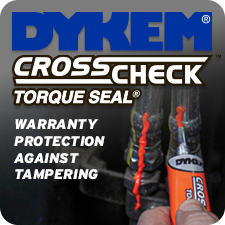Wired for Sales
Back to the future - 1980 versus 2025.
by Frank Hurtte
My official sales career began in 1979. I often ponder the differences between 1980 and today. Our world has been blessed – or maybe cursed – with a plethora of electronic aids. In 1980, fax machines were a novelty seen mostly in office supply stores in their “cool new product” section. By the mid-’80s, everyone had a fax. Then came cell phones, email, CRM, and all the rest. Yet, in many ways, sales hasn’t changed that much.
I ask myself, what would happen if a modern distributor went up against a 1980s distributor? I didn’t consider back-office efficiencies, warehouse logistics, or any other things that hopefully make the modern distributor more streamlined. This is about sales.
Customer Intimacy: Then and Now. What about customer intimacy? The 1980 distributor had an advantage. Customer contacts were more permanent in the days before reengineering of companies and lean practices. Additionally, distributors had more established sales teams. Most had worked with the same customer contacts for years. Advantage 1980.
1980 customer intimacy failed with secondary customers, especially those whose business did not justify a regular call pattern. The lack of any CRM system caused opportunities at these accounts to go missing. Modern CRM tools have revolutionized this aspect of sales. They provide distributors with the ability to track interactions, follow up with secondary accounts, and ensure no opportunity slips through the cracks. 2025 prevails here.
Smooth Account Transfers. Customer retention has always been important. In 1980, most well-organized salespeople carried a notebook containing their customer contacts. Top sellers updated the information regularly as they met new folks. However, there was little management oversight, meaning most salespeople did a haphazard job.
When a salesperson unexpectedly left the company due to illness, death, or termination, sales managers had little knowledge of key contacts at the customer. In most cases, they were unaware of opportunities or ongoing projects.
In contrast, today’s distributors can have a definite advantage – if CRM systems are fully utilized. By tracking opportunities and recording major activities, sales teams can step in and continue servicing accounts with minimal disruption. 2025 might win.
Team Selling Takes the Lead. Team selling is a standard approach today. Thinking back to 1980, the closest our industry came to team selling was the informal cooperation between an inside and outside salesperson.
Today, distributor sales teams often include multiple points of contact with customers. For instance, distributors with crib specialists working alongside primary salespeople ensure that key components of the business continue smoothly, even if a salesperson leaves the equation. This team approach improves continuity and strengthens relationships with customers.
Prospecting. In 1980, prospecting and business development were unheard of. It wasn’t uncommon to discover accounts that were completely unknown and untouched by a distributor’s efforts.
Today’s best distributors employ structured outreach efforts to discover new customers. Those who integrate e-commerce with engaging first-time visitors are considered best in class for prospecting within their territories. This proactive approach not only broadens the customer base but also creates opportunities for long-term growth.
Pricing and Gross Margin Strategies. Pricing and gross margin management are key factors in success. Looking back at 1980, the computer systems of the day were far less advanced. Most sellers found it nearly impossible to determine a product’s cost easily. The general practice was “trade service” discounting, which provided a sell price based on “column pricing.” If a seller wanted to offer a customer a special price, they might discount by a few percent.
Today’s distributors lean on cost-plus pricing, such as cost plus 20% markup. Unfortunately, this method can lead to deals that offer customers better pricing than the situation justifies. The proliferation of advanced pricing tools and analytics has helped address some of these challenges, allowing best-in-class distributors to make more informed and profitable pricing decisions. Sadly, most of today’s distributors score poorly.
The modern strategies and tools outlined could certainly tip the scales in favor of today’s distributor. As we head into 2025, it’s worth asking: Are we leveraging today’s tools to their fullest potential, or will the next generation look back at us and shake their heads? Being Wired for Sales requires contemplation and action.

Straight talk, common sense and powerful interactions all describe Frank Hurtte. Frank speaks and consults on the new reality facing distribution. Contact Frank at frank@riverheightsconsulting.com, (563) 514-1104 or at riverheightsconsulting.com.
This article originally appeared in the January/February 2025 issue of Industrial Supply magazine. Copyright 2025, Direct Business Media.













